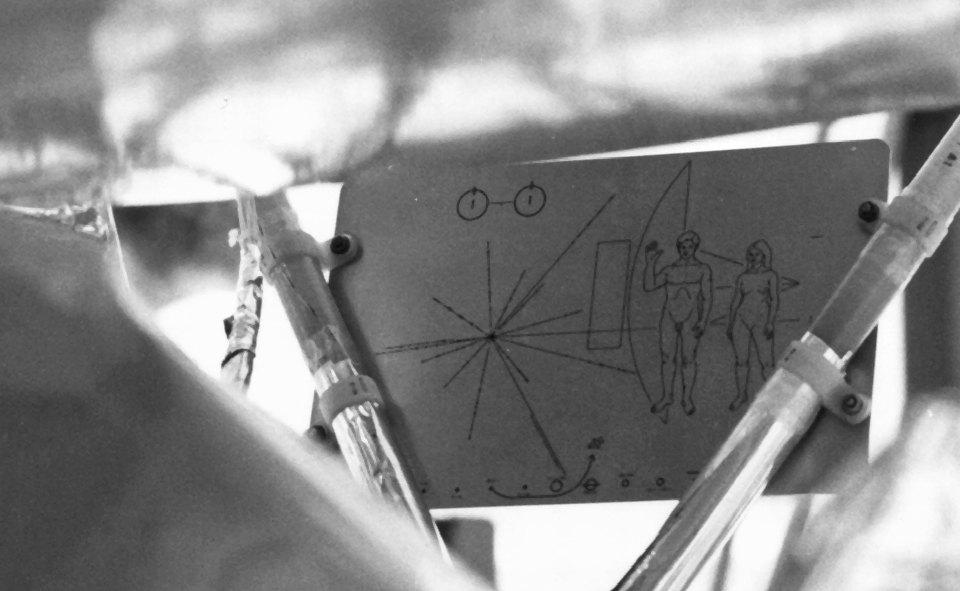Today marks exactly fifty years since the launch of Pioneer 10, one of the most iconic interplanetary crafts in history. It became the first Earth messenger to cross the asteroid belt, explore Jupiter and gain enough speed to leave the Solar System forever. On the occasion of today’s anniversary, we decided to recall the history and main achievements of Pioneer 10.
Space “pioneer”
In the late 1960s, NASA had a project that involved sending several interplanetary spacecraft to study Jupiter and other outer planets of the Solar System. But from the very beginning, the designers faced a number of questions. The main one was connected with the asteroid belt. There was an assumption that it was filled with numerous small particles that would cause irreparable damage to any spacecraft that decided to cross it.

Therefore, NASA decided to first send a couple of “simple” probes to Jupiter, which would play the role of space “pioneers” and check the safety of the path for subsequent more complex and expensive missions. They were named Pioneer 10 and Pioneer 11.
Pioneer 10 was launched on March 2, 1972. In July, it became the first spacecraft in history that entered the Main Asteroid Belt. The instruments installed on board the probe did not record a noticeable increase in the number of particles compared to the surroundings of the Earth. In February 1973, Pioneer 10 successfully finished the passage of the belt, proving its safety for space navigation.
Meeting with Jupiter
Pioneer 10 reached Jupiter in late 1973. On December 4, it flew at a distance of 132 thousand km from the clouds of the gas giant, taking the most detailed photos of the planet at that time.

The device collected data on the composition of the atmosphere of the gas giant, specified its mass, and measured the magnetic field strength. It turned out that the total heat flow from Jupiter is 2.5 times higher than the energy received by the planet from the Sun. In addition, Pioneer 10 took pictures of the largest Jovian moons and clarified their characteristics.
Based on the nature of Jupiter’s radio emission, astronomers have long suspected that the planet has radiation belts similar to Earth’s. Therefore, the flight path of Pioneer 10 was specially designed so that it passed through the areas of the highest concentration of charged particles.

The power of Jupiter’s radiation belts exceeded all scientists’ expectations. The Earth messenger was exposed to radiation doses 10 thousand times higher than the power of the Earth’s radiation belts. Due to exceeding the radiation level, the probe’s equipment began to generate false commands, and the connection was interrupted several times. As a result, almost all the images of Io and some of the images of Jupiter were lost. But, despite all the difficulties, Pioneer 10 managed to cope with the test and keep working. Later, based on the data it collected, NASA engineers built a safe flight path for the famous Voyager spacecraft.

Jupiter’s gravity sped up Pioneer 10, accelerating it to a speed that allowed it to leave the Solar System forever. Due to the presence of a radioisotope power source, Pioneer 10 kept in touch with the Earth until the beginning of the 21st century. The last telemetry from the spacecraft was received on April 27, 2002, and the last weak radio signal was received on January 23, 2003.
Message for the aliens
Although we will never hear Pioneer 10 again, perhaps others will find out about it in the distant future. The fact is that, at the insistence of the famous popularizer of science Carl Sagan, shortly before the launch, a gold-plated aluminum plate with a message for representatives of extraterrestrial civilizations was placed on board Pioneer 10. It is engraved with a schematic image of a man and a woman against the background of the device, basic information about the Solar System and a pulsar map that allows to determine the location of the Sun in the Milky Way.

Now, Pioneer 10 is located at a distance of 130 au from the Sun (19.5 billion km) and annually moves away from it by another 2.5 au. After 90 thousand years, it will fly at a distance of 0.75 light years away from the orange dwarf HIP 117795. In the future, the probe will continue its endless journey through the expanses of the Milky Way. Who knows, maybe one day someone will actually receive its message?
